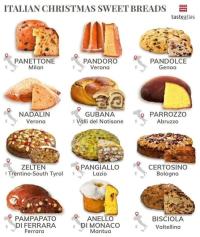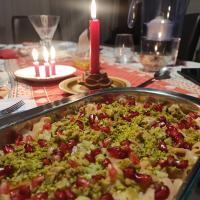Copy Link
Add to Bookmark
Report
Cider Digest #1490

Subject: Cider Digest #1490, 15 March 2009
From: cider-request@talisman.com
Cider Digest #1490 15 March 2009
Forum for Discussion of Cider Issues
Dick Dunn, Digest Janitor
Contents:
Streptomycin sources ("Harrison Gibbs")
Juice extraction from cider apples (david.pickering@dpi.nsw.gov.au)
Re: [ukcider] Juice extraction from cider apples (Mark Ellis)
MN1734 (Jack O Feil)
Seeking testers for cider apples (Claude Jolicoeur)
Baby Diapers & Fermaid (Mark Shepard)
Send ONLY articles for the digest to cider@talisman.com.
Use cider-request@talisman.com for subscribe/unsubscribe/admin requests.
When subscribing, please include your name and a good address in the
message body unless you're sure your mailer generates them.
Archives of the Digest are available at www.talisman.com/cider
----------------------------------------------------------------------
Subject: Streptomycin sources
From: "Harrison Gibbs" <rharrisong@lycos.com>
Date: Tue, 10 Mar 2009 17:31:07 -0400 (EDT)
I need a source for streptomycin (Agri-Strep, Agrimycin) before apple bloom
in Virignia to fight a case of fire blight. We only have a few trees so
I do not need cases of the stuff. Any good suggestions? Thanks.
Harrison Gibbs
------------------------------
Subject: Juice extraction from cider apples
From: david.pickering@dpi.nsw.gov.au
Date: Wed, 11 Mar 2009 09:03:45 +1100
Can anyone help me with information about juice extraction from apple
pulp.
I'm asking this jointly on the UK and US email discussion groups
There have been various comments in times past about efficiency of
pressing with various presses but my question relates to the composition
of juice that is extracted at various stages.
Can anyone point me to anecdotal or scientific information of the kind
that says how (or if) the compostion of juice changes during the pressing
procedure. For instance, if a press can extract 60-65% of the weight of
pulp as juice, is the first juice extracted the same as the main flow of
juice and likewise the last bit of juice that can be wrung out by leaving
the pulp under pressure?
If you re-shred the pulp and re-press, or if you put the pulp in a more
efficient pressing/extraction system do you continue to get more of the
same juice or does the composition change.
Watching a stack of cheeses being pressed gives the impression that the
liquid is getting more viscous as the cycle progresses but is this just
appearances, or is it real and what is changing? More sugars or what?
David Pickering
Orange Agricultural Institute, NSW Dept of Primary Industries
Forest Road, Orange, NSW 2800, Australia
david.pickering@dpi.nsw.gov.au
phone 02 6391 3800 fax 02 6391 3899 mobile 042 727 1477
------------------------------
Subject: Re: [ukcider] Juice extraction from cider apples
From: Mark Ellis <marke.inoz@gmail.com>
Date: Wed, 11 Mar 2009 09:51:02 +1100
Hi David,
I believe Warcollier's/Charley's great book, The Principle and Practices
of Cidermaking has quire a detailed account of this. I'll dig in and
have a look and report back.
Cheers
Mark E. in Oz
david.pickering@dpi.nsw.gov.au wrote:
>
> Can anyone help me with information about juice extraction from apple
> pulp.
> I'm asking this jointly on the UK and US email discussion groups
> There have been various comments in times past about efficiency of
> pressing with various presses but my question relates to the
> composition of juice that is extracted at various stages.
> Can anyone point me to anecdotal or scientific information of the kind
> that says how (or if) the compostion of juice changes during the
> pressing procedure. For instance, if a press can extract 60-65% of the
> weight of pulp as juice, is the first juice extracted the same as the
> main flow of juice and likewise the last bit of juice that can be
> wrung out by leaving the pulp under pressure?
> If you re-shred the pulp and re-press, or if you put the pulp in a
> more efficient pressing/extraction system do you continue to get more
> of the same juice or does the composition change.
> Watching a stack of cheeses being pressed gives the impression that
> the liquid is getting more viscous as the cycle progresses but is this
> just appearances, or is it real and what is changing? More sugars or
> what?
>
> David Pickering
> Orange Agricultural Institute, NSW Dept of Primary Industries
> Forest Road, Orange, NSW 2800, Australia
> david.pickering@dpi.nsw.gov.au
> phone 02 6391 3800 fax 02 6391 3899 mobile 042 727 1477
------------------------------
Subject: MN1734
From: Jack O Feil <feilorchards@juno.com>
Date: Tue, 10 Mar 2009 20:07:44 -0800
The University of Minnesota apple breeding program has developed a new
cider variety(sweet or hard?).I've googled and have found very little
information other than it makes good cider,cooks well and is a russet and
is probably very winter hardy as are the varieties released by the U of
M. Has anyone out there heard anything more about this apple or where I
can get information on it?
Thanks, Jack Feil
------------------------------
Subject: Seeking testers for cider apples
From: Claude Jolicoeur <cjoli@gmc.ulaval.ca>
Date: Wed, 11 Mar 2009 22:44:09 -0400
This message is almost an exact repetition of one I posted a year ago...
The intent is to reiterate the offer to send scion wood to cider makers and
apple growers who would like to test these 3 cider apples that I have been
using for my ciders for over 10 years. These are apples that I discovered
and have informally named. I haven't propagated them much yet. After many
years of using them, I think they have enough merits to be tested in other
locations than my orchard. These 3 apples are very hardy in my zone 4
location and ripen well in a short and cool season.
First, here is a description of them:
"Douce de Charlevoix" (Charlevoix Sweet in English) is an apple that I
collected in the village of Baie-Saint-Paul, county of Charlevoix, Quebec.
It appears to be from a seedling rootstock that overgrew the grafted
variety. This apple could be classified as a sweet or as a mild
bittersweet, suitable for early season cider. In my orchard, about 50 miles
NE of Quebec City, zone 4, I normally harvest it during first week of
September and press it about 2 weeks later. This is about the same timing
as Bulmer's Norman and Breakwell's Seedling. Since 1992 when I first
pressed some of these apples, I have obtained juice with a S.G. ranging
from 1.047 to 1.057, and titrable acidity expressed as tartaric acid from
0.25% to 0.4%. These numbers are quite comparable to those I have obtained
from the Bulmer's Norman, although the latter is some years slightly higher
in density and in acidity.
Douce de Charlevoix is a very handsome apple that reach about 2.5 inches
across, it is conical in shape and striped orange-red on a greenish
background. It is productive annually, vigourous and hardy. In my orchard,
it gets very little scab even if I don't spray. It is also one of my most
efficient apples in terms of yield of juice per weight of apples. The juice
has an excellent flavour with a mild bitterness - it is not very
interesting to drink nature because of the lack of acidity. The only
drawback I find to this apple for cider is that I would prefer a higher
sugar content.
"Banane amère" (Bitter Banana in English) is from a huge multi-trunk
seedling tree that was growing on my property when I bought it in 1982.
This tree is about 50 feet high and its lowest branches are still too high
to pick even with a ladder! So I pick the apples on the ground when they
fall, usually by end of September or beginning of October. This apple is
unedible, it is extremely bitter with a faint banana aroma (hence the name
I give it). It could be classified as a full bittersweet with hard tannin.
Since 1994, juice density has ranged between 1.055 and 1.062, with acidity
between 0.15% and 0.35%. Those numbers are comparable to those I have
obtained from the Yarlington Mill apple, which, of the apples that I grow,
is the most similar. However, Yarlington Mill is not as hardy and does not
ripen well every year in my location.
Banane amère is suitable in late season blends, mostly with table apples
that have a lot of acidity and no bitterness. It adds a lot of body and
tannin to the cider and can give the character of a true English cider to a
blend of juices with no special cider character (e.g. McIntosh, Lobo,
etc.). However, in my experience, it should not be used in a ratio
exceeding 25% of the blend as the cider may become too harsh. So, overall,
I think it is a valuable apple for blending and improving characterless
juice, but I don't think it could be a good variety for a single varietal
cider because its tannin is too hard.
The Banane amère apples normally reach 2.5 inches across and are mostly
green with a bit of pale red. The juice yield is fair and the juice
obtained is very thick and very dark brown. Some years it gets scab fairly
badly, but most years it is almost clean of it.
"Bilodeau" is a crab apple that I obtained from a friend named Claude
Bilodeau. He got it from a nursery as a tagging error as this tree was
supposed to be of another variety. I have never been able to know if it is
a named variety and to identify it. It mostly looks like the Robin crab,
but it has some notable differences. This small apple ripens with the Douce
de Charlevoix and I usually harvest and press them together. I started
using it in 1996, and since then, the juice obtained has had a S.G. ranging
from 1.066 to 1.073, with titrable acidity between 0.8% and 1% (which is
very reasonable for a crab). It also has a noticeable amount of tannin.
Actually, this apple makes a perfect blend with Douce de Charlevoix as both
apples complement each other very well, Bilodeau bringing the sugar while
Douce de Charlevoix mellows the acidity and adds its mild bitterness. The
cider that I presented in December 2007 at the GLOWS competition was mostly
made from this blend - it earned a bronze medal.
Bilodeau is a small apple, usually 1-3/4 inch across. It is very beautiful,
bright yellow covered with a nice red, sometimes with varying amount of
russet. It never gets any scab, but the curculios seem to go for them and I
sometimes have to accept small crops. It's other drawback is that it is a
favorite of all the family and some years there is not much left for the
cider! The juice yield is good and the tree is hardy and vigorous.
I have posted some pictures of these apples - they may be seen at:
http://picasaweb.google.com/cjoliprsf/ExclusiveCiderApples
and, for those interested, there are a few other albums, including some
pictures of the orchard and of my homemade press at:
http://picasaweb.google.com/cjoliprsf
In conclusion, I think these 3 apples are interesting alternatives to the
use of European cider apples which may not adapt well in some locations,
mostly the colder locations with short and cool summer. If some of the
readers of this digest are interested in testing them I can send some
grafting wood this spring. Note that I have no idea on how many of you will
respond to this and I have limited amount of wood. So, I will figure things
when I get a feedback... Please write to me privately if you are interested.
Eventually, I would like to get a feedback from the testers. I will
probably send you a questionnaire in a couple of years asking how many
grafts you have, on what type of rootstock, how much growth they have had,
any defect you may have noticed and eventually on your opinion about the
fruit.
Claude Jolicoeur
------------------------------
Subject: Baby Diapers & Fermaid
From: Mark Shepard <forestag@mwt.net>
Date: Fri, 13 Mar 2009 07:33:16 -0500
Hi All...
Only recently I've begun using FermAid as a nutrient in my
cyder's. (I formerly used straight MAP)
Since I've begun using it, I've gotten two batches that have the
classic "baby diapers" aroma/flavor.
I've never gotten baby diapers before... I've been a sulphides guy...
Is the aroma/flavor in part a result of using FermAid? Any insights
from you folks?
Mark Shepard-Cydermaker
Zydeco Cyder Co.
15662 County Hwy I
Viola, WI 54664
608-739-CYDR (2937)
------------------------------
End of Cider Digest #1490
*************************






















